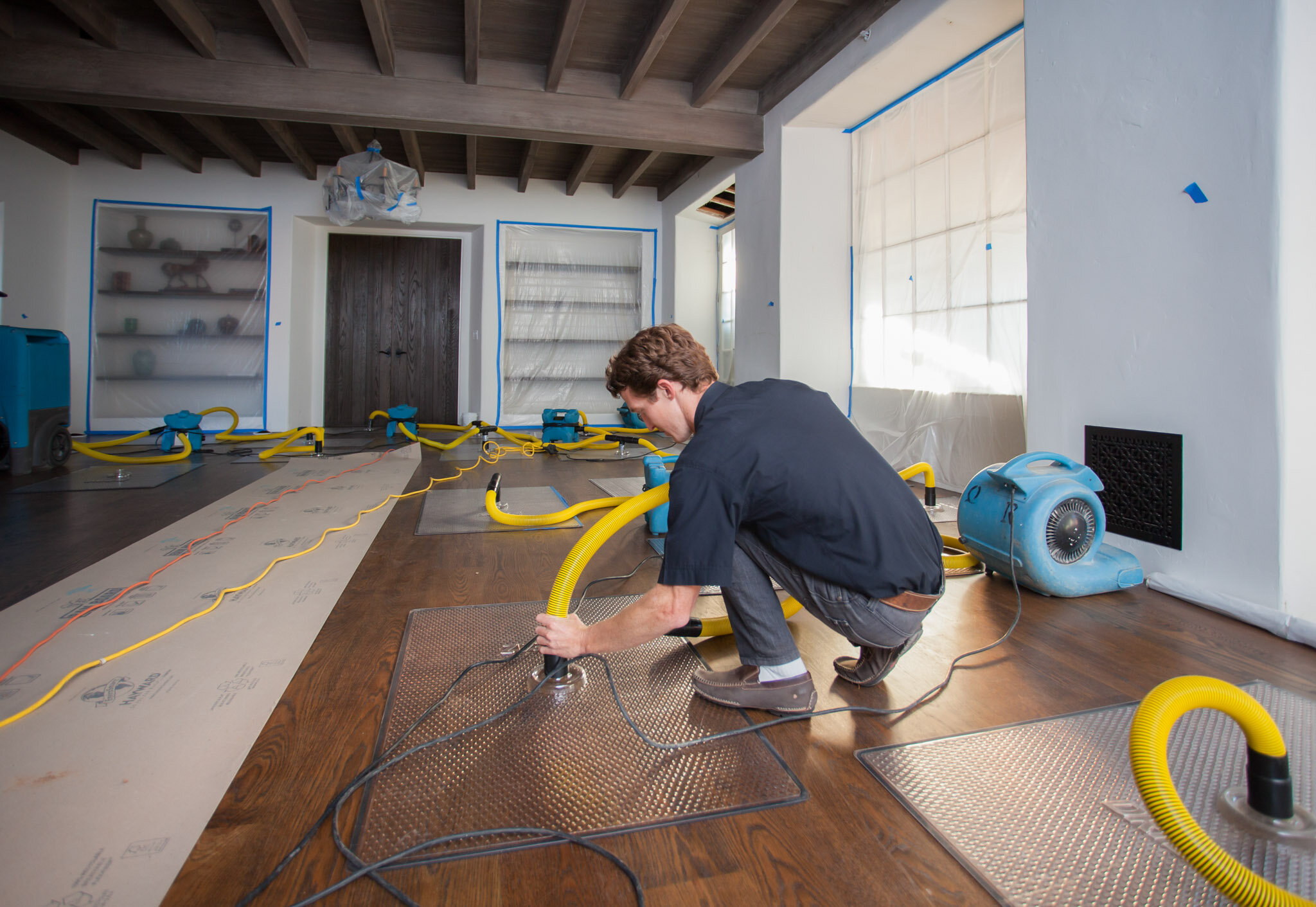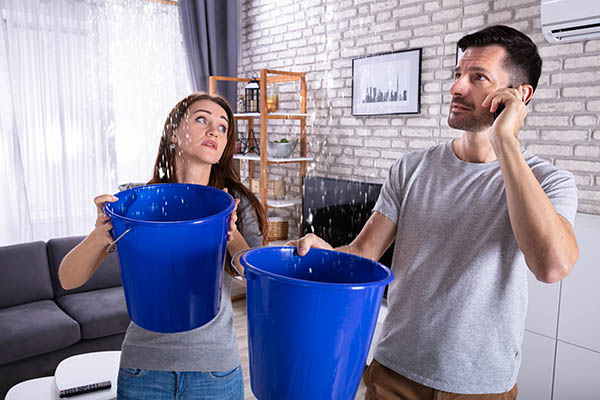Top Tips for Effective Water Damage Restoration: Shield Your Home Today
Water damage can strike unexpectedly, causing significant interruption and possible dangers. Effective remediation needs a methodical method to decrease further damage. From examining the damage to carrying out preventive steps, each step plays a crucial duty in securing property. Understanding these techniques can make all the difference in the after-effects of a water-related dilemma. What necessary actions should be prioritized to guarantee comprehensive defense?

Analyze the Damage Right Away
When a water damage occasion occurs, it is vital to evaluate the damage instantly to mitigate more concerns (Water Extraction And Drying). This first analysis aids identify the degree of the damage and determines affected areas. Water can seep right into walls, floorings, and furnishings, causing mold development and structural instability if not resolved immediately. An extensive inspection needs to consist of examining for discoloration, moisture, and stuffy smells, which indicate wetness presence. It is likewise vital to document the damage via photos and notes for insurance functions. Engaging professionals for an extra detailed assessment may be necessary, particularly when taking care of substantial or surprise damage. Early acknowledgment and precise assessment lay the foundation for efficient reconstruction and safeguard the residential or commercial property from added difficulties
Shut down the Water Supply
Turning off the water is a crucial action in protecting against additional damage throughout a water-related event. When a leakage or flood takes place, instant action is important to lessen the degree of the damage. Situating the main water shut-off shutoff must be a priority. This valve is commonly located near the water meter or where the water line goes into the residential property. As soon as situated, turning the valve clockwise will quit the circulation of water. In instances where the primary shutoff is unattainable, private shut-off valves for appliances might likewise be used. Quickly turning off the water system not only safeguards the residential property from added damage but likewise assists in the subsequent reconstruction process, making certain that healing initiatives can begin immediately.
Get Rid Of Excess Water Without Delay
Eliminating excess water without delay is crucial for minimizing damage and stopping mold and mildew growth in influenced locations. The longer water stays in call with materials such as wood, drywall, and insulation, the higher the danger of structural damage and the advancement of mold. Homeowners must act swiftly to examine the circumstance and utilize proper devices, such as damp vacuums or pumps, to remove standing water successfully. If the quantity of water is substantial, contacting specialist restoration solutions might be essential, as they can provide specialized tools and know-how. Additionally, removing furniture and items from the damaged area can help to lower damage and help with the total repair procedure. Prompt action not just shields residential property but likewise aids in a smoother recuperation journey.

Dry Out the Affected Location
After getting rid of excess water, it is important to dry out the damaged area extensively. This entails removing any type of standing water and boosting air flow to help with dissipation. Water Damage Restoration. Reliable drying out will certainly help stop mold development and further damage
Remove Standing Water
Swiftly dealing with standing water is critical for efficient water damage reconstruction. The presence of stagnant water can cause additional home damage and develop a setting conducive to mold and mildew growth. To mitigate these risks, it is important to eliminate standing water as swiftly as possible. Water Damage Restoration. This process usually entails using completely submersible pumps, damp vacuum cleaners, or specialized removal equipment. Experts recommend reviewing the depth and level of the water before selecting the proper approach for elimination. Safety safety measures should additionally be taken, consisting of wearing safety equipment and guaranteeing electrical energy is shut off in affected locations. Once the standing water is properly gotten rid of, the drying out procedure can start, even more guarding the home from ongoing damage

Increase Air Circulation
Enhancing air flow is essential for effectively drying out locations impacted by water damage (Water Damage Restoration). This procedure helps to speed up evaporation, minimizing the danger of mold and mildew development. Specialists frequently advise making use of followers to produce a stable air flow throughout the area. Putting box followers in home windows can attract fresh air, while high-velocity followers can direct air flow in the direction of wet surfaces. In addition, opening home windows and doors enables cross-ventilation, boosting the drying out process. Dehumidifiers can additionally be employed to eliminate excess dampness from the air, additional aiding in drying out. By guaranteeing that air flows freely, residential or commercial property owners can significantly minimize the long-lasting results of water damage and secure the stability of their framework
Check for Mold Growth
Mold development is a major worry complying with water damage, as it can result in health concerns and structural deterioration. After any type of flooding or leakages, it is vital to carry out an extensive assessment of the impacted locations. This consists of checking surprise spaces such as behind walls, under carpetings, and in attic rooms or cellars where wetness might linger. Signs of mold include a musty odor, staining on surface areas, or noticeable development. Homeowner need to use protective gear when inspecting, as mold spores can posture wellness threats. If mold and mildew is found, it is vital to resolve it immediately, as postponing removal can exacerbate the problem and increase the risk of significant health and wellness concerns for residents. Early treatment is essential to efficient mold and mildew administration.
Repair Work and Bring Back Broken Structures
When addressing water damage, it is vital anchor to first assess the architectural stability of the impacted areas. This evaluation aids determine prospective risks and notifies the needed repair methods. Involving expert remediation services guarantees that the reconstruction process is performed securely and efficiently.
Analyze Structural Stability First
Before initiating any water damage repair, it is necessary to evaluate the architectural stability of the damaged location. This examination helps determine any endangered elements, such as foundations, light beams, or wall surfaces, which may posture safety threats. Checking for indications of warping, breaking, or mold and mildew development is critical, as these indicators can expose underlying damage that requires instant focus. In addition, recognizing the level of the damage can direct reconstruction initiatives and identify whether repair services are possible or if replacement is required. It is very important to document findings completely, as this details can be valuable for insurance coverage cases or future reference. Prioritizing structural evaluation guarantees that reconstruction efforts proceed securely and properly, eventually protecting the building and its occupants.
Use Expert Restoration Services
Making use of specialist restoration services is essential for effectively fixing and restoring broken frameworks after water events. These professionals have the needed training, devices, and experience to minimize and assess water damage thoroughly. They can recognize concealed issues, such as mold development and architectural weak points, that might not be immediately evident. Expert solutions likewise use sophisticated drying out techniques and tools, guaranteeing that all dampness is eliminated to stop further damage. Additionally, they comply with industry criteria and guidelines, ensuring that the reconstruction procedure is risk-free and effective. By engaging restoration professionals, building proprietors can accelerate recovery, reduce lasting damage, and eventually shield their financial investment. This positive method is necessary in preserving the stability and security of affected structures.
Stop Future Water Damage
To properly protect against future water damage, homeowners must adopt an aggressive approach to repair and maintenance (Flood Cleanup Services). Routine inspection of downspouts, rain gutters, and roofing systems is essential; stopped up seamless gutters can cause water overflow and roofing leaks. Additionally, looking for leakages in pipes components and home appliances can obstruct possible damage. Homeowners need to likewise think about setting up sump pumps in basements or low-lying locations to take care of water accumulation. Securing fractures in structures and making certain appropriate drainage around the property are essential action in guarding against water invasion. Moreover, preserving humidity levels with dehumidifiers can prevent mold development. By applying these safety nets, home owners can substantially reduce the threat of water damage and secure their home for the long-term
When a water damage occasion takes place, it is vital to analyze the damage instantly to reduce more issues. Removing excess water promptly is necessary for decreasing damage and protecting against mold development in affected areas. Quickly attending to standing water is crucial for efficient water damage remediation. The visibility of stationary water can lead to more property damage and create a setting favorable to mold development. Before starting any kind of water damage remediation, it is essential to analyze the structural integrity of the afflicted area.